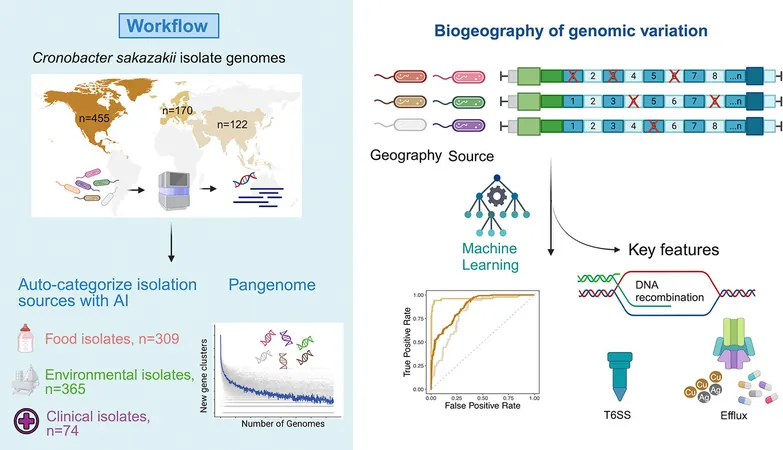
Uncovering the Secrets of a Menacing Pathogen: How AI is Revolutionizing Infant Formula Safety
2025-07-10
Author: Ming
New Insights into a Deadly Pathogen
Researchers from the University of Maryland's Department of Nutrition and Food Science have made a groundbreaking discovery about Cronobacter sakazakii, a dangerous food-borne pathogen known for its alarming links to powdered infant formula. This research could reshape our strategies for monitoring and preventing contamination in vital food products.
Why This Matters: The Risks of Cronobacter Sakazakii
C. sakazakii has been in the spotlight due to recent recalls of powdered infant formula, raising serious concerns about life-threatening infections. While cases are uncommon, the potential consequences are dire, particularly for vulnerable groups such as premature infants and the elderly, with risks ranging from meningitis to long-term developmental challenges.
Harnessing AI for Genomic Insights
The team conducted the first-ever genomic meta-analysis of C. sakazakii strains worldwide, utilizing AI to decode vast amounts of inconsistent data. By employing machine learning, they identified critical genetic markers that may illuminate the pathogen’s ability to thrive in dry environments, such as powdered foods.
Understanding Genetic Resilience
Assistant Professor Ryan Blaustein highlighted how certain accessory genes—non-essential yet advantageous—aid C. sakazakii in surviving harsh conditions and evading cleaning protocols. The researchers analyzed 748 genome sequences from diverse sources across North America, Europe, and Asia to create the most comprehensive genetic map of the pathogen to date.
AI: A Game Changer in Data Standardization
The innovative use of a large AI language model standardized metadata about sample origins, enabling extensive comparisons of the data, which had previously been inconsistent. This approach ensured a high degree of accuracy in the categorization, a significant leap forward in genomic research.
Key Findings: Genetic Signatures Revealed
Their findings revealed that powdered food samples exhibited larger genomes and a higher concentration of genes related to DNA repair and desiccation resistance. This raises alarms about the strain's capacity to persist in dry environments, with some variants showing increased virulence.
Geographic Correlations and Health Implications
Interestingly, the research uncovered geographical correlations between genetic profiles linked to biofilm formation and resistance to heavy metals like copper—an antimicrobial agent at high levels present in various food systems. This adaptability could enable C. sakazakii to thrive in diverse ecological niches, from hospitals to food facilities.
A Call for Enhanced Food Safety Measures
Understanding the genetic traits that bolster C. sakazakii's resilience can guide better sanitation protocols and processing technologies, particularly for powdered food manufacturers. This study highlights the importance of global collaboration to track and manage food-borne pathogens.
The Future of Pathogen Surveillance
The research opens new avenues for identifying critical traits in various pathogens. Integrating AI for data standardization and genomic analysis could pave the way for faster, more precise surveillance systems to combat emerging threats. With the world of food production becoming increasingly globalized, tracking genetic markers of virulence and resistance is more crucial than ever.



 Brasil (PT)
Brasil (PT)
 Canada (EN)
Canada (EN)
 Chile (ES)
Chile (ES)
 Česko (CS)
Česko (CS)
 대한민국 (KO)
대한민국 (KO)
 España (ES)
España (ES)
 France (FR)
France (FR)
 Hong Kong (EN)
Hong Kong (EN)
 Italia (IT)
Italia (IT)
 日本 (JA)
日本 (JA)
 Magyarország (HU)
Magyarország (HU)
 Norge (NO)
Norge (NO)
 Polska (PL)
Polska (PL)
 Schweiz (DE)
Schweiz (DE)
 Singapore (EN)
Singapore (EN)
 Sverige (SV)
Sverige (SV)
 Suomi (FI)
Suomi (FI)
 Türkiye (TR)
Türkiye (TR)
 الإمارات العربية المتحدة (AR)
الإمارات العربية المتحدة (AR)